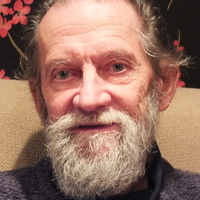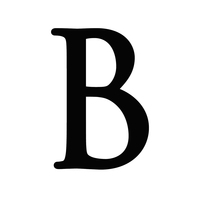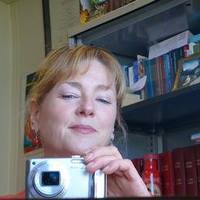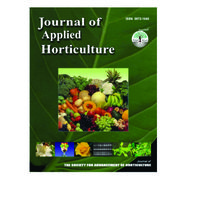Papers by Sophie J Williamson

TAMPAN TULIP , 2022
In the essay "Tulip is a tulip is a tulip" by Sophie J Williamson, the author explores the intric... more In the essay "Tulip is a tulip is a tulip" by Sophie J Williamson, the author explores the intricate connections and narratives embedded within a single tulip petal. Through an analysis of Jennifer Tee's artwork "Tampan Natural System of Souls," which features a collage of tulip petals, the essay delves into the fluidity and interdependence of objects and their histories. The tulip petal, resembling both a feather and a petal, becomes a vessel for mythological and historical symbology, both of ecologies and the artist's own entangled heritage, Indonesian-Chinese-British-Dutch. The author examines the tulip's journey from its origins in Persia and Turkey to its cultivation and transformation in Europe, particularly during the Tulipmania period in the Netherlands. The essay highlights the significance of movement, time, and human intervention in the tulip's existence, drawing parallels to the rhythms of nature and the broader socio-cultural context. Ultimately, the tulip petal represents a convergence of stories, entangled histories, and uncertain futures, reflecting the intricate web of relationships that shape our world.
ArtMonthly, 2021
Seeking dialogues with not only the 'critical zone; of the Earth's surface but also the planet's... more Seeking dialogues with not only the 'critical zone; of the Earth's surface but also the planet's volatile core, enabling us to reconnect with our 'geological ancestry', through the work of artists, filmmakers and writers
ArtMonthly, 2020
Vulnerability, intimacy and entanglement in the moments of dying, pushing the body to its limits,... more Vulnerability, intimacy and entanglement in the moments of dying, pushing the body to its limits, and rope bondage.
ArtMonthly, 2020
As the universe expands to its fullest point, in order to spring backwards, inwards to nothingnes... more As the universe expands to its fullest point, in order to spring backwards, inwards to nothingness, the infinite impermanence of silence is alive with poiesis, both dependent and independent from its past, yet binding individuals together with its agency. In our temporary quiet present, we continue our silent communication with the silent palintropic turning of the Earth’s matter: past, present and possible.

Translation, Documents of Contemporary Art, 2019
The movement of global populations, and subsequently the task of translation, underlies contempor... more The movement of global populations, and subsequently the task of translation, underlies contemporary culture. Economic and environmental migration, forced political exiles, and the plight of refugees are now superimposed upon the intricacies of ancient and modern diasporas, generations of colonization, and the transportation of slaves. This timely anthology considers translation's ongoing role in cultural navigation, empathy, and understanding disparate experiences. It explores the approaches of artists, poets, and theorists in negotiating increasingly protean identities—from the intrinsic intimacy of language, to translation's embedded structures of knowledge production and interaction, to its limitations of expression, and, ultimately, its importance in a world of multiple perspectives.
Artists surveyed include Meric Algün Ringborg, Geta Brătescu, Tanya Bruguera, Jesse Darling, Chto Delat, Chohreh Feyzdjou, Susan Hiller, Glenn Ligon, Teresa Margolles, Shirin Neshat, Hélio Oiticica, Pratchaya Phinthong, Kurt Schwitters, Yinka Shonibare, Mladen Stilinović, Erika Tan, Kara Walker, Wu Tsang
Writers include Hannah Arendt, James Baldwin, Walter Benjamin, Judith Butler, Luis Camnitzer, Jean Fisher, Stuart Hall, bell hooks, Sarat Maharaj, Martha Rosler, Bertrand Russell, Simon Sheikh, Gayatri Spivak, Hito Steyerl, Lawrence Venuti
Art Monthly
In Ancient Greece the Cynics based their philosophy on concepts of freedom, self-sufficiency and ... more In Ancient Greece the Cynics based their philosophy on concepts of freedom, self-sufficiency and independence, practicing 'parrhesia', the act of speaking freely, even if it posed great personal risk. This paper looks at artistic practices that follow this ethos, and how artists might influence politics and society in doing so.
In an era when identity politics is being co-opted into wider nationalist agendas and diversity i... more In an era when identity politics is being co-opted into wider nationalist agendas and diversity increasingly embroiled in ethnic division and separatism, how have artists engaged with cultural translation to open up the act of interpretation?











Uploads
Papers by Sophie J Williamson
Artists surveyed include Meric Algün Ringborg, Geta Brătescu, Tanya Bruguera, Jesse Darling, Chto Delat, Chohreh Feyzdjou, Susan Hiller, Glenn Ligon, Teresa Margolles, Shirin Neshat, Hélio Oiticica, Pratchaya Phinthong, Kurt Schwitters, Yinka Shonibare, Mladen Stilinović, Erika Tan, Kara Walker, Wu Tsang
Writers include Hannah Arendt, James Baldwin, Walter Benjamin, Judith Butler, Luis Camnitzer, Jean Fisher, Stuart Hall, bell hooks, Sarat Maharaj, Martha Rosler, Bertrand Russell, Simon Sheikh, Gayatri Spivak, Hito Steyerl, Lawrence Venuti
Artists surveyed include Meric Algün Ringborg, Geta Brătescu, Tanya Bruguera, Jesse Darling, Chto Delat, Chohreh Feyzdjou, Susan Hiller, Glenn Ligon, Teresa Margolles, Shirin Neshat, Hélio Oiticica, Pratchaya Phinthong, Kurt Schwitters, Yinka Shonibare, Mladen Stilinović, Erika Tan, Kara Walker, Wu Tsang
Writers include Hannah Arendt, James Baldwin, Walter Benjamin, Judith Butler, Luis Camnitzer, Jean Fisher, Stuart Hall, bell hooks, Sarat Maharaj, Martha Rosler, Bertrand Russell, Simon Sheikh, Gayatri Spivak, Hito Steyerl, Lawrence Venuti